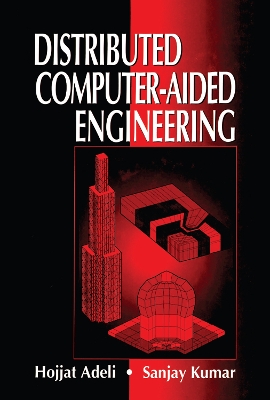Computer Aided Engineering
2 primary works
Book 2
Networking of personal computers and workstations is becoming commonplace in academic and industrial environments. A cluster of workstations provides engineers with a familiar, cost-effective environment for high performance computing. However, workstations often have no dedicated link and communicate slowly on a local area network (LAN), such as the Ethernet. Thus, to effectively harness the parallel processing or distributed computing capabilities of workstations, new algorithms need to be developed with a higher computation-to-communication ratio.
Distributed Computer-Aided Engineering presents distributed algorithms for three fundamental areas: finite element analysis, design optimization, and visualization - providing a new direction in high performance structural engineering computing.
Book 3
High Performance Computing in Structural Engineering
by Hojjat Adeli and Roesdiman Soegiarso
High-performance multiprocessor computers provide new and interesting opportunities to solve large-scale structural engineering problems. However, the development of new computational models and algorithms that exploit the unique architecture of these machines remains a challenge.
High Performance Computing in Structural Engineering explores the use of supercomputers with vectorization and parallel processing capabilities in structural engineering applications. The book focuses on the optimization of large structures subjected to the complicated, implicit, and discontinuous constraints of commonly used design codes and presents robust parallel-algorithms for analysis of these structures.
The authors apply the algorithms to and analyze the performance of minimum weight designs of large, steel space trusses and moment-resisting frames, with or without bracings, consisting of discrete standard shapes. They clearly show that adroit and judicious use of vectorization techniques can improved the speedup of an optimization algorithm, and that parallel processing can lead to even further speedup.
With its review of the necessary background material, generous illustrations, and unique content, this is the definitive resource for the analysis and optimization of structure on shared-memory multiprocessor computers. By extension, High Performance Computing in Structural Engineering will prove equally valuable in distributed computing on a cluster of workstations

